Constipation is a common digestive issue that affects people of all ages, causing discomfort, bloating, and irregular bowel movements. One of the most effective ways to relieve constipation naturally is by following a high fiber diet. A high fiber foods chart for constipation can guide you in choosing the right fruits, vegetables, legumes, whole grains, and nuts to improve your digestive health.
Fiber-rich foods not only add bulk to your stool but also stimulate the digestive system, making bowel movements smoother and more regular. Incorporating these foods into your daily meals ensures better gut health and long-term relief from constipation.
What is Constipation and How Fiber Helps
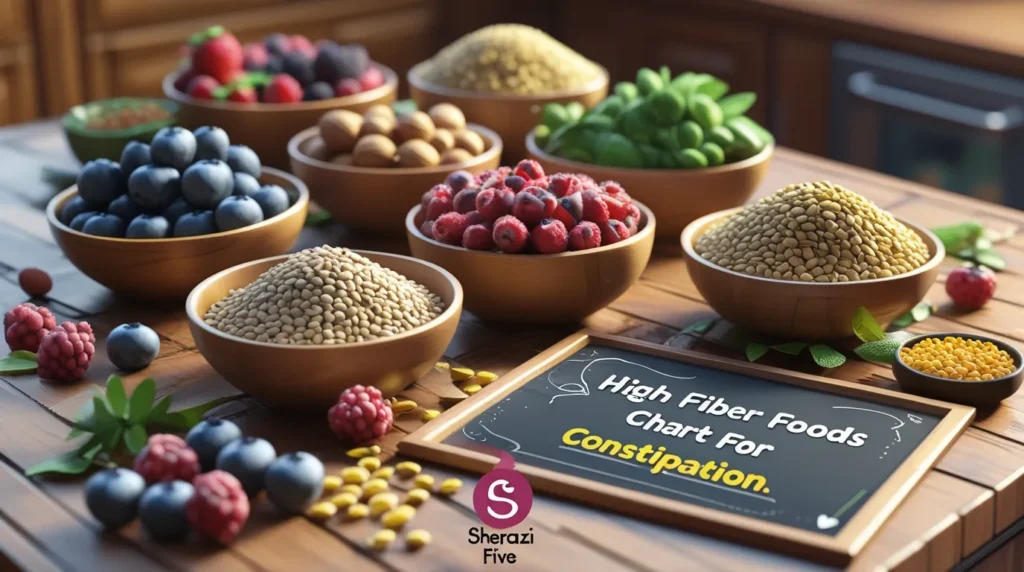
Constipation occurs when bowel movements become infrequent or difficult to pass. It is often caused by a diet low in fiber, dehydration, or a sedentary lifestyle. Fiber acts like a natural broom for your digestive system. Soluble fiber absorbs water, making stools softer, while insoluble fiber adds bulk to help move stool through the intestines.
Eating a high fiber diet can prevent constipation, improve digestion, and even reduce the risk of digestive disorders. By understanding the role of fiber, you can make smarter food choices to ease bowel movement and promote healthy digestion.
Why You Need a High Fiber Diet for Constipation
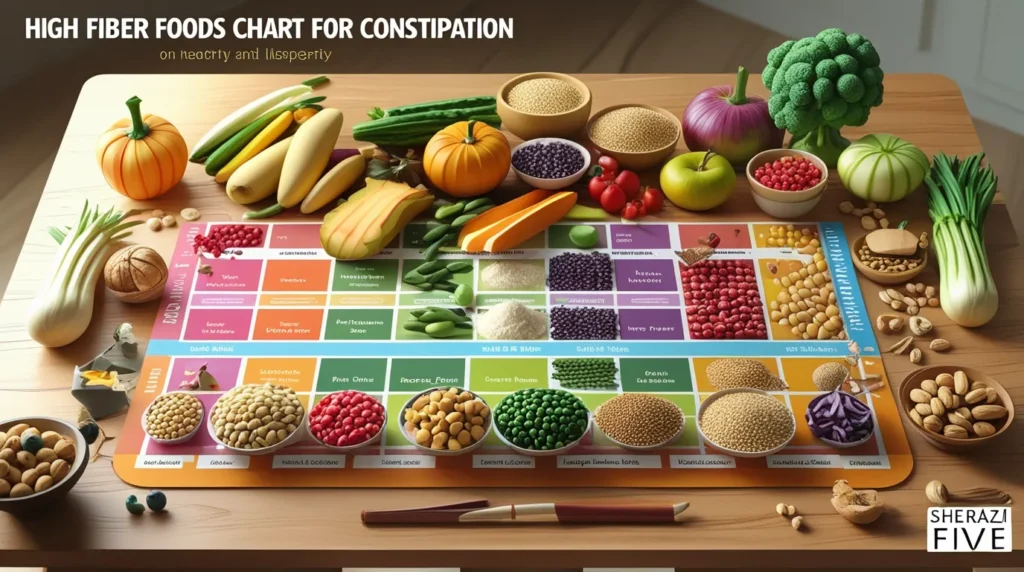
A diet rich in fiber is crucial not just for constipation relief, but also for overall digestive health. Fiber stimulates the bowel muscles, making bowel movements easier and more regular. For people struggling with chronic constipation, fiber can reduce bloating, discomfort, and even the risk of hemorrhoids.
Moreover, a fiber diet plan helps maintain a healthy gut microbiome. The good bacteria in your intestines thrive on fiber, producing short-chain fatty acids that support digestion and reduce inflammation. Including fiber-rich foods in your daily meals is the easiest way to naturally ease bowel movements.
Types of Fiber and Their Role in Digestion
Fiber is generally classified into soluble and insoluble types. Soluble fiber dissolves in water to form a gel-like substance that softens stool. Foods like oats, apples, and beans are excellent sources. Insoluble fiber, found in whole grains, vegetables, and nuts, adds bulk to stool and speeds up its passage through the colon.
For best results, it’s recommended to include both types of fiber in your diet. A balanced intake helps prevent constipation while supporting overall gut function. Combining fiber-rich fruits, vegetables, and grains ensures you get a variety of nutrients while easing bowel movement.
Top High Fiber Foods Chart for Constipation
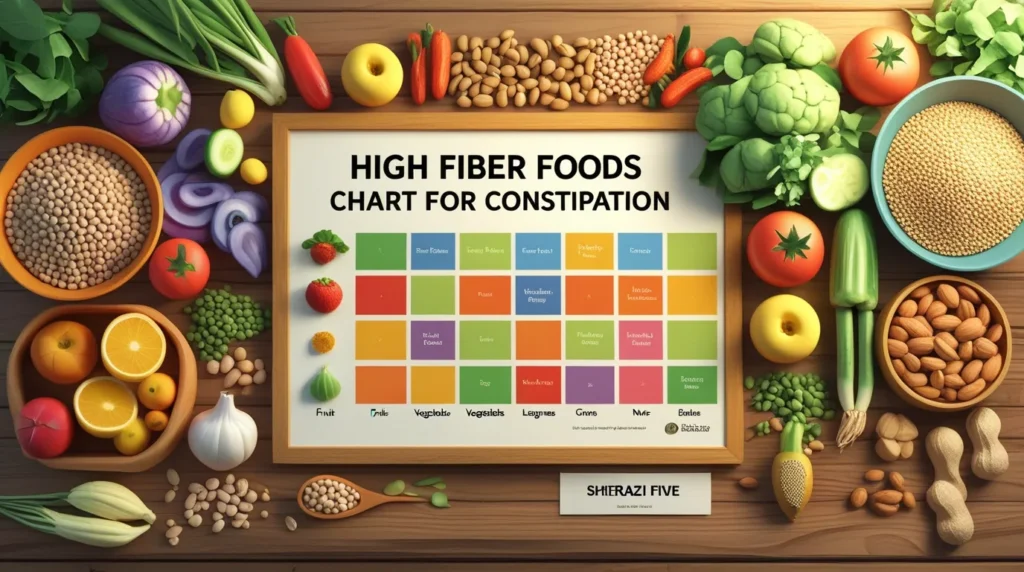
Here’s a simple high fiber foods chart for constipation showing foods, their categories, and fiber content:
| Food Category | Example Foods | Fiber Content (g per 100g) |
|---|---|---|
| Fruits | Apples, Pears, Berries | 2–5 |
| Vegetables | Broccoli, Carrots, Spinach | 3–4 |
| Legumes | Lentils, Chickpeas, Black Beans | 7–8 |
| Whole Grains | Oats, Brown Rice, Quinoa | 4–6 |
| Nuts & Seeds | Almonds, Chia Seeds, Flaxseeds | 6–10 |
This fiber chart for adults is a quick reference to include the best fiber-rich foods in your diet. Consuming a variety of these foods daily can significantly reduce constipation symptoms.
Fruits High in Fiber for Constipation Relief
Certain fruits are not only delicious but also excellent natural remedies for constipation. Berries, pears, and apples are rich in soluble fiber, which helps soften stool. Prunes are particularly effective because they contain natural laxatives called sorbitol and fiber, making them a top choice for natural constipation relief.
Adding fruits to your breakfast, smoothies, or snacks can increase your daily fiber intake. Pair fruits with nuts or seeds to boost both fiber and nutrient content, supporting your digestive system efficiently.
Vegetables and Legumes That Boost Fiber Intake
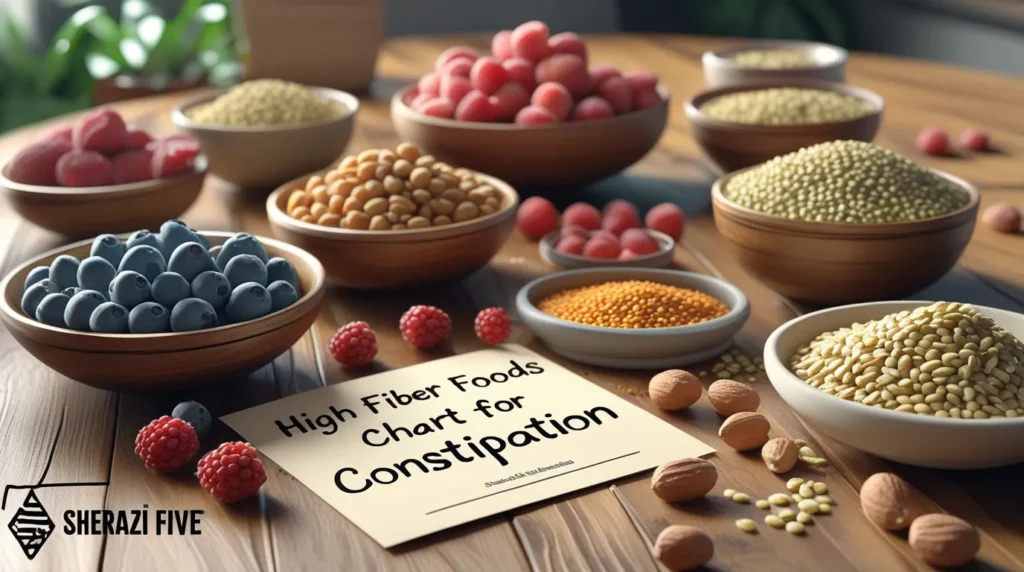
Vegetables and legumes are essential for a fiber-rich diet. Vegetables like broccoli, carrots, and spinach provide both soluble and insoluble fiber. Legumes such as lentils, chickpeas, and black beans are among the highest sources of fiber, making them excellent for chronic constipation.
Including a mix of cooked and raw vegetables in your meals can optimize fiber absorption. Legumes can be added to soups, stews, or salads to naturally increase bowel movement. Regular consumption of these foods strengthens the digestive system and keeps your gut healthy.
Whole Grains and Nuts to Include in Your Diet
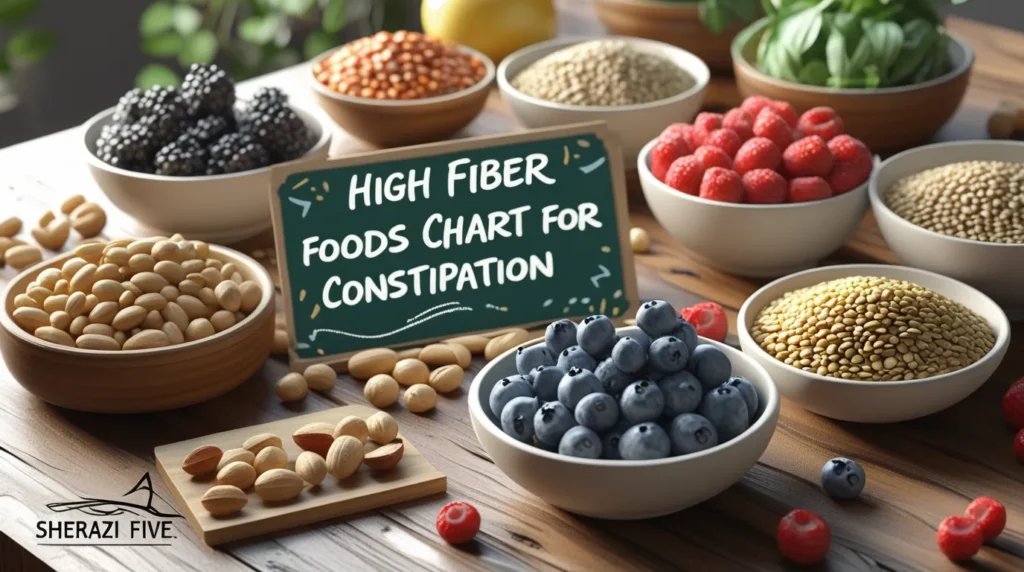
Whole grains like oats, brown rice, and quinoa are fiber powerhouses. They are rich in insoluble fiber, which helps bulk up stool and promote regular bowel movements. Similarly, nuts and seeds, such as almonds, flaxseeds, and chia seeds, contain both fiber and healthy fats, aiding digestion.
Including whole grains and nuts in breakfast, snacks, or meals not only helps relieve constipation but also supports heart health and stabilizes blood sugar. Make sure to drink enough water to allow fiber to work effectively in your digestive system.
Tips to Increase Fiber Intake Safely
Increasing fiber too quickly can cause bloating, gas, and discomfort. Gradually introduce fiber-rich foods into your diet, starting with 5–10 grams per day and increasing slowly. Always pair fiber with plenty of water to ease bowel movement.
Incorporate fiber through natural foods instead of supplements when possible. Eating a variety of fruits, vegetables, whole grains, legumes, and nuts ensures a balanced intake. This approach reduces constipation without upsetting your digestive system.
Top Foods High in Iron Boost Energy, Prevent Anemia, and Stay Healthy Naturally
How to Boost Self Confidence Proven Tips for Everyone
How to Lower Blood Pressure While on Testosterone A Complete Guide
Common Mistakes While Eating Fiber for Constipation
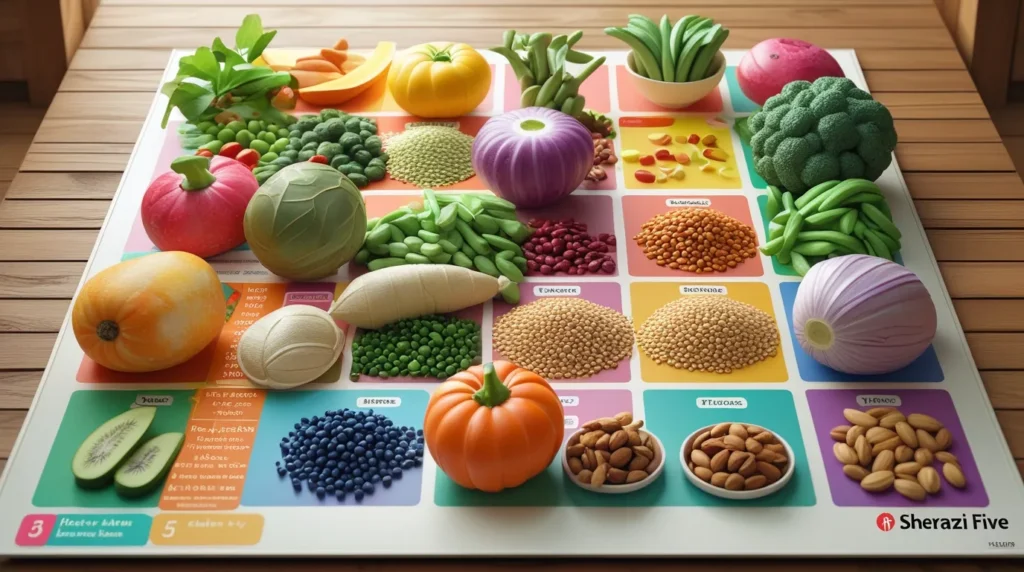
Many people make mistakes while trying to relieve constipation with fiber. One common error is consuming fiber without enough water, which can worsen constipation. Another is relying solely on processed fiber supplements instead of natural fiber-rich foods.
Avoid skipping meals or having a low-vegetable diet, as this limits fiber intake. Overeating fiber at once can cause bloating and discomfort. A steady, balanced approach with fiber-rich foods ensures your digestive system stays healthy and active.
How to Make a Daily High Fiber Meal Plan
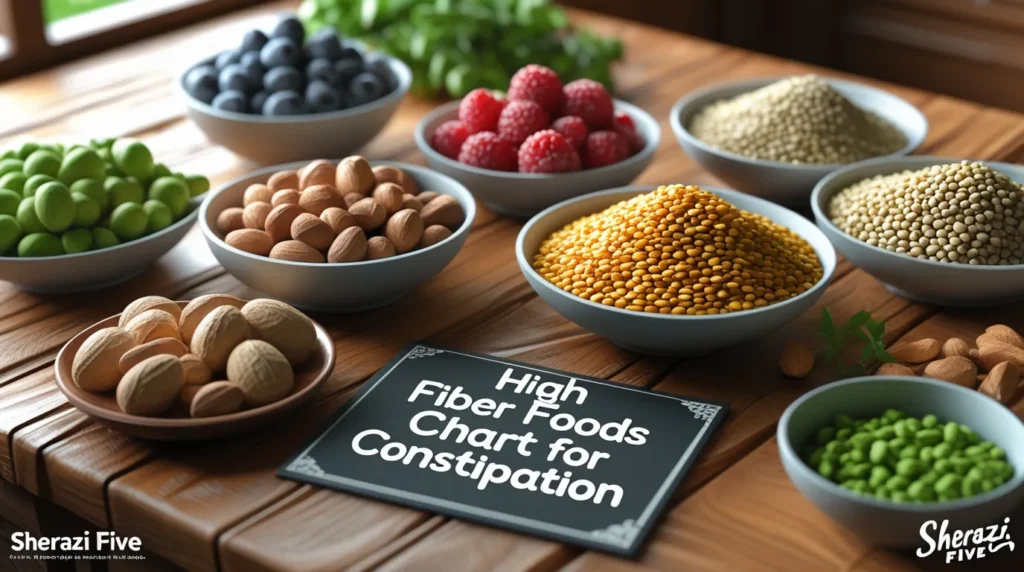
Creating a fiber diet plan is easier than you think. Start your day with a high-fiber breakfast like oatmeal with berries and chia seeds. For lunch, include a vegetable salad with chickpeas or lentils. Dinner can feature brown rice, steamed vegetables, and a side of nuts.
Snacks like apples, pears, or roasted almonds help maintain daily fiber intake. By spreading fiber intake throughout the day, your digestive system works efficiently, preventing constipation and promoting healthy digestion naturally.
Conclusion
Constipation is uncomfortable, but a high fiber foods chart for constipation can make a big difference. Eating fiber-rich fruits, vegetables, whole grains, legumes, and nuts regularly promotes smooth bowel movements, reduces bloating, and supports overall gut health.
Remember to increase fiber gradually, drink plenty of water, and maintain a balanced diet. With consistent fiber intake and a healthy lifestyle, constipation can be relieved naturally, improving both digestion and well-being.
FAQs
1. What are the best high fiber foods for constipation?
Fruits like berries, pears, and prunes, vegetables like broccoli and carrots, legumes such as lentils and chickpeas, and whole grains are excellent for easing constipation naturally.
2. How much fiber should I eat daily to relieve constipation?
Adults should aim for 25–30 grams of fiber per day. Gradually increasing fiber intake while drinking plenty of water helps improve bowel movements effectively.
3. Can nuts and seeds help with constipation?
Yes! Almonds, chia seeds, and flaxseeds are rich in fiber and healthy fats, promoting smooth digestion and increasing bowel movement naturally.
4. Are fiber supplements as effective as natural foods?
Fiber supplements can help, but whole foods provide both soluble and insoluble fiber along with vitamins and minerals, making them more effective for long-term constipation relief.
5. Which fruits are most effective for constipation relief?
Prunes, pears, apples, and berries are high in soluble fiber and natural laxatives, making them the top choice for natural constipation relief.
6. Can vegetables alone prevent constipation?
Vegetables like spinach, broccoli, and carrots are high in fiber and help maintain regular bowel movements, especially when paired with fruits and whole grains.
7. How does fiber improve digestion?
Fiber adds bulk to stool and promotes the growth of good bacteria in the gut. This supports healthy digestion and prevents chronic constipation naturally.
8. Can I eat too much fiber?
Yes, excessive fiber without enough water can cause bloating, gas, or discomfort. Increase fiber gradually to allow your digestive system to adapt.
9. Is whole grain better than refined grain for constipation?
Absolutely! Whole grains contain insoluble fiber that helps move stool efficiently, unlike refined grains, which are low in fiber and can worsen constipation.
10. How can I make a daily high fiber meal plan?
Include fiber-rich breakfast like oatmeal with berries, lunch with vegetables and legumes, and dinner with brown rice or quinoa. Snacks like apples or nuts maintain fiber intake throughout the day.




